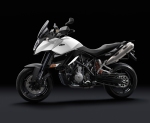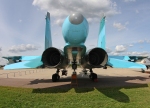
One of the greatest 3D artists in the world, gave me an interview some time ago when I was working in VIDI magazine, and here it is for all to read in PDF format for download, or you can read the plain text version that follows:
Meats Meier interview – PDF Download
Hello Meats, could you please introduce yourself to the readers of VIDI magazine, personally and professionally.
I`m Meats Meier, a traditional and digital artist. I am 34 years old and have worked with computer graphics for over 10 years. I work out of my own studio creating animations and illustrations. I live and breathe art, it is my whole world. It is all that I really focus on. I also create training DVDs for Maya and Zbrush through the Gnomon Workshop (www.thegnomonworkshop.com)
How did you start in computer graphics, who were your role models? (how did you learn, did you have any mentors?)
I started originally with my father, who brought home an Amiga computer when I was young. I was so excited and learned all that I could when it was my turn to use it. I started with a small painting program called Dpaint. It opened a whole world to me. When I was 22 years old, I was asked to become a lead artist at a video game studio. It was there that I was introduced to the world of 3D. I started 3D with a program called Strata Studio Pro. It was really slow to work in, but I was patient and began my learning process of the 3D world. A little later, the company that I worked for “Beyond Games” got a copy of Alias Poweranimator and Wavefronts Advanced Visualizer program and I was paid to learn how to use them. I feel very lucky for that. It was a lot of work, there wasn`t any good training available at the time, so it just came down to reading all of the manuals from cover to cover.
What are you currently working on?
Right now I am working on animations for the live concert show for the band “TOOL” as well as my own personal artwork whenever I have the time. I am also creating a DVD explaining my process of inserting digital elements into live action video. I spend a lot of time filming the things around me and then having fun adding 3D creatures and characters into the scenes and trying to make them look as real as possible. It is not all fun for me, although. I am trying to start my own studio by myself, so it means that I have focus on computer networking, business things, etc. and not just the artwork.
You have a lot of great projects, but which one of them is your favorite?
I think that whatever I am currently working on is usually my favorite because it`s fresh in my mind. If I had to choose things from the past, it would probably be the Mother Nature series, as I have gained a lot of exposure because of it. It has appeared on the cover of several books and magazines over the last few years, and is probably my most recognized piece. I also really like the old animations on my demo reel, which I had a lot of fun creating.
What made you famous in the world of 3D, when did people start to notice you?
I got my first bit of exposure after I created the short film “the Future of Art” in 2001. I won best animation at a film festival for it and was featured on a few 3D websites because of it. It was strange at first getting fan emails and questions, but I eventually got used to it. Shortly after, I decided it would be best if I spent time making still images with the programs, and began to post them all over the internet, which led to a lot of people knowing my name.
What do you recommend to beginners in 3D, how to start off and what is important for them to know at the very beginning?
It`s been said many times, but a good knowledge of traditional artwork is very crucial to making good 3D artwork. You have to know the rules in order to break them. It`s also very important to know just how hard it is to learn enough that you can create artwork or images with the computer. It takes a lot of time and dedication in order to get good at it. Once you are at the professional level, it is even harder. You have a lot of people that are working very, very hard at their craft and they are your competition. If you ever want to make a living doing 3D, you just have to want it more that everyone else and put your heart and soul into it and get better every day.
Where do you get your inspiration from and is there something you cannot work without (music, coffee etc.)
I definitely couldn`t work without coffee and music for sure. Coffee wakes me up, and music keeps me going. I work by myself all day, so I need to be stimulated as much as possible to stay focused. My inspiration just comes from making things. I just try and get something up on screen that I could look at. Once the seed is planted, it is easy for me to look at it and come up with ideas to make it better and more interesting. Each day I add or take off a little bit to improve on an idea. I also work on many things at once, and borrow pieces or concepts from each other to improve on the individual ideas.
What is the software combination that you use the most? And why?
The main software packages I use are Maya, Zbrush, Boujou, After Effects, and of course Photoshop. I have used Maya since it was introduced and I am very comfortable working with it at this point. Zbrush is the tool that I use to add detail and sometimes begin my 3D models; it is such an amazing program. It feels very artistic and natural. For compositing, I use After Effects, it`s what I`ve always used, and was also trained to work professionally with when I worked at the Orphanage (a visual effects house) on the movie “Hellboy”.
I am always open to new software choices, and I will always just use what I believe to be the best.
Software is of course nothing without hardware, so what do you use? (Computer, tablet etc.)
I have a new dual core workstation and four dedicated render machines that are networked with a program called “RenderPal” which allows me to split up my images onto all of the computers to enable me to work on high resolution images very quickly. I use a Wacom tablet for most of my input; I use it even on word processors. I also have a Canon D20 still camera and a Canon Gl2 video camera, which are both very important in my work.
We know you have been working on some blockbuster movies in Orphanage, so how is it to work on movies compared to “regular” artwork?
Working on movies is a great experience for sure. The best part is seeing your name in the credits once the movie finally comes out! I enjoy my own personal work much more because I have control over every aspect and can work much faster that way. Working with a huge team on something like a major motion picture involves a lot of hours away from home and basically no life. I did learn so much from doing it, but one of the things that I learned is that I am much happier creating my own personal art.
Based on your experience in movie CG, do you plan to stay in the movie industry?
I will probably always work in the CG movie industry but will do it as a private artist working out of my own studio, and not for someone else.
You have made most of your work in Maya and ZBrush, and even made covers for those two, but are you maybe involved in development of those applications in any way?
I like to think that I have given some good input to the companies here and there, but haven`t played any type of major role in the development. I was on the beta team for the first Zbrush and was able to learn it before almost anyone. I was also trained by the creator of Zbrush, Ofer Alon. I try and give feedback whenever possible.
How much technical knowledge must today`s digital artists have to get most out of modern 3D applications?
It`s getting less and less complicated, but a 3D artist still has to know so much technical things in order to do much with 3D at this point. Programs like Zbrush are making it so that traditional sculptors can just jump in and create art. I think that this is the path that 3D will take in the near future – programs created for artists, not technicians.
Have you ever worked with other applications besides Maya and ZBrush? What do you think about SoftimageXSI, 3DS Max and Lightwave3D?
I have tried most programs (I always want to know what is out there) but always go back to Maya, it just feels so comfortable to me.
Realism vs. stylization? What do you go for?
I like a little bit of both. I like things to look real, but also want to use 3D to make things that aren`t possible in real life. If I want to make really realistic things, I will just use my camera and take a picture of it.
How demanding is working as a professional 3D artist?
It is very demanding. You never know what your boss or client will want from you, so you have to be ready for nearly anything and be ready to take on any challenge. The competition is very hard as well. So many people want to work in video games or movies that you have to be very skilled to compete.
Except being a great 3D artist, what else do you do in your life, how do you spend your free time? How do you relax after all that modeling and animation?
I like to relax and not do anything at all in my free time. Other than that I like to be with my friends, ride my motorcycles, and enjoy the weather of southern California. I love to watch movies, although it is hard for me to not think about how they went about creating all of the effects.
Have you ever wanted to be something else? As a kid, what did you dream becoming of?
As a kid I only wanted to be an artist. I knew it was the only thing that I could be from a very young age. I was lucky because I had parents that supported me and my artwork and they made sure I always had the support and supplies that I needed. For a while I did want to become a stunt man, though. 😉
































































































































































































































































































































































































































































































































































































 Pete Namlook (born in Frankfurt, Germany) is an ambient and electronic music producer and composer. In 1992, he founded the German record label FAX +49-69/450464, which he masterminds…
Pete Namlook (born in Frankfurt, Germany) is an ambient and electronic music producer and composer. In 1992, he founded the German record label FAX +49-69/450464, which he masterminds…

































































































































































































































































 Elvis is alive! And he is living in home for elderly people with cancer on his penis, and his best friend is JFK, who is btw black 🙂 And they are here to save the world from ancient mummy that came to life and is sucking human souls through their asses 🙂
Elvis is alive! And he is living in home for elderly people with cancer on his penis, and his best friend is JFK, who is btw black 🙂 And they are here to save the world from ancient mummy that came to life and is sucking human souls through their asses 🙂 Talking about silly horror movies… Dead Snow was such a surprise to me when I saw it that I had to tell everybody about it!
Talking about silly horror movies… Dead Snow was such a surprise to me when I saw it that I had to tell everybody about it!
















 Main character in that article was Bono Vox from U2 (personaly I really love their old albums), who is “a great man who figts for human rights, world peace etc. etc.”. But Bono obviously fights for his money also (poor little Bono)!
Main character in that article was Bono Vox from U2 (personaly I really love their old albums), who is “a great man who figts for human rights, world peace etc. etc.”. But Bono obviously fights for his money also (poor little Bono)!


























